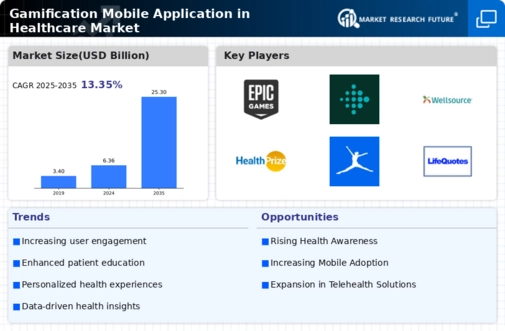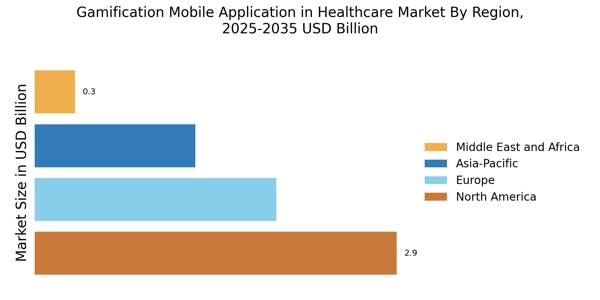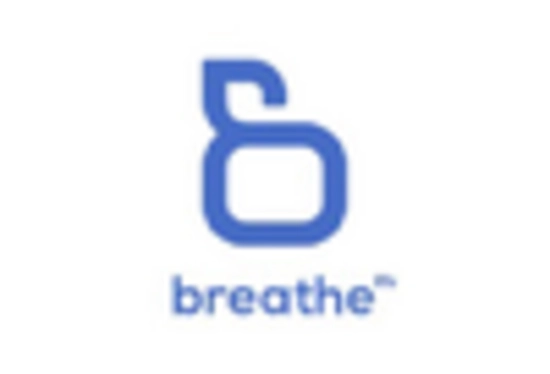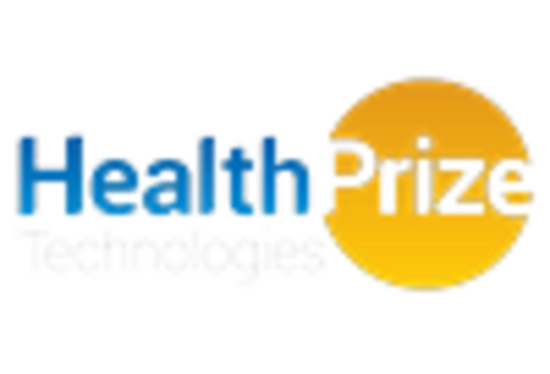Emphasis on Patient-Centered Care
The Gamification Mobile Application in Healthcare Market is significantly shaped by the emphasis on patient-centered care. Healthcare providers are increasingly recognizing the importance of involving patients in their own health management, and gamification serves as a powerful tool to facilitate this engagement. By incorporating game-like elements, such as rewards and challenges, healthcare applications can motivate patients to take an active role in their health. This approach aligns with the broader trend towards personalized medicine, where treatment plans are tailored to individual patient needs. Data indicates that patient engagement can lead to better health outcomes and higher satisfaction rates. As the healthcare landscape continues to evolve towards patient-centered models, the Gamification Mobile Application in Healthcare Market is poised for substantial growth.
Increased Focus on Preventive Healthcare
The Gamification Mobile Application in Healthcare Market is significantly influenced by the increasing focus on preventive healthcare. As healthcare systems worldwide shift towards preventive measures, there is a growing recognition of the role that gamified applications can play in promoting proactive health management. These applications encourage users to engage in regular health assessments, track their fitness levels, and adhere to preventive care guidelines. Data suggests that preventive healthcare can reduce overall healthcare costs by up to 30%, highlighting the economic benefits of such initiatives. By leveraging gamification, healthcare providers can enhance patient engagement and compliance, ultimately leading to improved health outcomes. This shift towards preventive care is likely to propel the growth of the Gamification Mobile Application in Healthcare Market, as stakeholders seek effective tools to support their health management strategies.
Rising Demand for Health and Wellness Apps
The Gamification Mobile Application in Healthcare Market is experiencing a notable surge in demand for health and wellness applications. As individuals increasingly prioritize their health, the need for engaging and interactive solutions becomes paramount. According to recent data, the health and wellness app market is projected to reach a valuation of over 100 billion dollars by 2025. This trend indicates a growing acceptance of mobile applications that incorporate gamification elements, which enhance user experience and promote healthier behaviors. The integration of game mechanics into health applications not only motivates users but also fosters a sense of community, thereby driving user retention and satisfaction. Consequently, this rising demand is a significant driver for the Gamification Mobile Application in Healthcare Market, as developers strive to create innovative solutions that cater to the evolving preferences of health-conscious consumers.
Technological Advancements in Mobile Health
The Gamification Mobile Application in Healthcare Market is being propelled by rapid technological advancements in mobile health. Innovations in mobile technology, such as improved app functionalities, enhanced user interfaces, and the integration of artificial intelligence, are transforming the landscape of healthcare applications. These advancements enable developers to create more sophisticated gamified experiences that can adapt to individual user needs and preferences. For instance, the incorporation of AI-driven analytics allows for personalized feedback and recommendations, which can significantly enhance user engagement. As mobile health technology continues to evolve, it is expected that the Gamification Mobile Application in Healthcare Market will expand, offering new opportunities for developers and healthcare providers alike to engage users in their health journeys.
Growing Acceptance of Digital Health Solutions
The Gamification Mobile Application in Healthcare Market is witnessing a growing acceptance of digital health solutions among consumers and healthcare professionals. As digital health technologies become more mainstream, there is an increasing willingness to adopt mobile applications that utilize gamification to enhance health management. Surveys indicate that over 70% of consumers are open to using digital health tools, reflecting a shift in attitudes towards technology in healthcare. This acceptance is further fueled by the increasing availability of reliable data and evidence supporting the efficacy of gamified health applications. As more individuals recognize the benefits of these solutions, the demand for gamified applications is likely to rise, driving growth in the Gamification Mobile Application in Healthcare Market.


















Leave a Comment